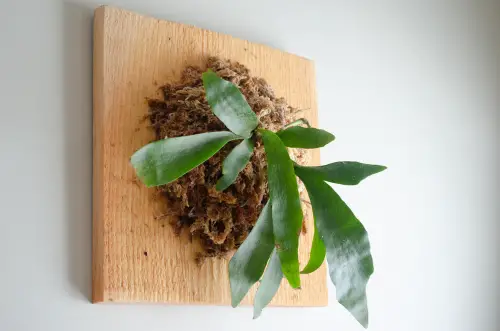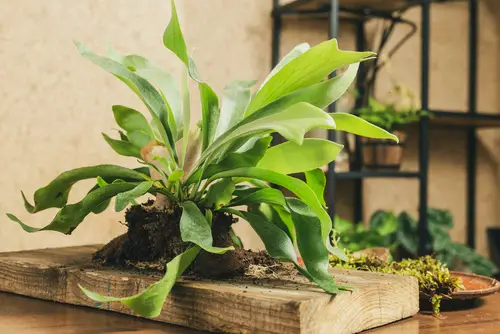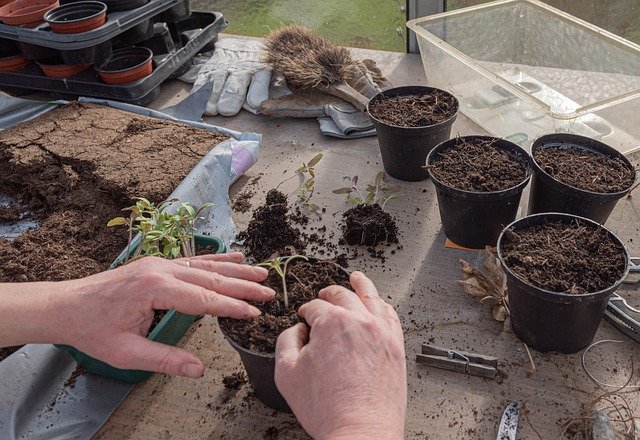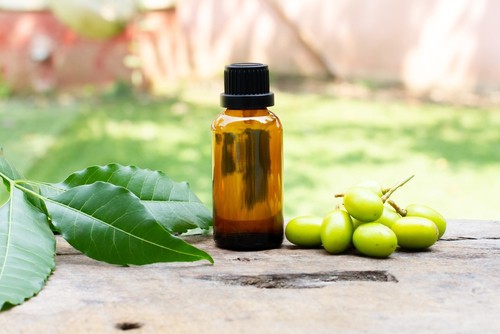Staghorn ferns are unique and beautiful plants that can add a touch of tropical elegance to any home. However, if you notice the leaves of your staghorn fern turning yellow, it could be a sign that something is wrong.
Yellowing leaves can be a symptom of a variety of issues, from overwatering to pests, and it’s important to diagnose the problem quickly to save your plant.
Understanding staghorn ferns is crucial to diagnosing and treating yellow leaves. These ferns are epiphytes, which means they grow on other plants rather than in soil.
They absorb nutrients and moisture through their leaves and roots, making them susceptible to issues like root rot and dehydration. Additionally, staghorn ferns require specific care, including proper watering, humidity, and light conditions, to thrive.
There are several potential causes of yellow leaves in staghorn ferns, including overwatering, underwatering, pests, and nutrient deficiencies. Symptoms of these issues can vary, but yellowing leaves are a common sign that something is wrong.
Proper diagnosis is key to treating the issue and preventing further damage to your plant. With the right care and attention, you can help your staghorn fern recover and thrive.
Key Takeaways on Staghorn Fern Leaves Turning Yellow
- Yellow leaves on staghorn ferns can be a sign of various issues, including overwatering, pests, and nutrient deficiencies.
- Proper diagnosis is crucial to treating the issue and preventing further damage to your plant.
- Understanding staghorn ferns and their unique care requirements can help you keep your plant healthy and vibrant.
Also see:
Understanding Staghorn Ferns

Staghorn ferns (Platycerium species) are epiphytes, which means that they grow on other plants or trees and don’t need soil to survive. They are native to tropical regions and are popular houseplants due to their unique and striking appearance.
Staghorn ferns have two types of leaves: basal and fertile. Basal leaves are flat and shield-shaped, while fertile leaves are antler-shaped and grow upward. The fertile leaves produce spores, which are used for reproduction.
These ferns are relatively low-maintenance and can grow up to several feet wide and tall. They prefer bright, indirect light and high humidity levels, which can be achieved by misting the leaves or placing a humidity tray nearby. Staghorn ferns also require good air circulation to thrive.
One common issue with staghorn ferns is yellowing leaves. This can be caused by a variety of factors, including overwatering, underwatering, pest infestations, or incorrect lighting conditions. It’s important to identify the cause of the yellowing leaves and take appropriate action to remedy the issue.
Staghorn Fern Leaves Turning Yellow – 6 Common Problems
Staghorn ferns are a popular choice for indoor and outdoor gardens, but yellowing leaves can be a common problem. There are several reasons why staghorn fern leaves may turn yellow,.
Here is a detailed explanation of each:
1. Lighting Issues
Lighting issues are a common cause of yellowing leaves in staghorn ferns. These plants require bright, indirect light to thrive. If they are exposed to direct sunlight, their leaves can become scorched and turn yellow. On the other hand, if they do not receive enough light, their leaves may also turn yellow and drop off.
2. Watering Problems
Overwatering or underwatering can also cause yellowing leaves in staghorn ferns. These plants require their soil to be evenly moist, but not waterlogged. Overwatering can cause yellowing, rotting, or mold on the plant.
On the other hand, lack of watering might also gradually cause fronds to go yellow. It is essential to ensure proper drainage and avoid keeping the soil too wet or too dry.
3. Temperature and Humidity Factors

Staghorn ferns prefer warm, humid environments. If the temperature drops too low or the humidity is too low, their leaves may turn yellow. Low humidity or lack of watering might also gradually cause fronds to go yellow.
4. Pest Infestations
Pest infestations are another possibility for yellowing leaves in staghorn ferns. Check your ferns for pests such as mites, mealybugs, and scale insects. These pests can suck the sap from the leaves and cause them to turn yellow.
5. Fertilizer and Soil Conditions
Fertilizer and soil conditions can also impact the health of staghorn ferns. If the soil lacks nutrients, the leaves may turn yellow. Overfertilizing can also cause yellowing leaves. It is essential to use a balanced fertilizer and avoid overfertilizing.
6. Transplant Shock and Repotting
Transplant shock and repotting can also cause yellowing leaves in staghorn ferns. When you transplant a staghorn fern, it may experience shock, which can cause its leaves to turn yellow. Repotting can also cause stress to the plant, which can lead to yellowing leaves.
It is essential to be gentle when transplanting or repotting and to ensure that the plant has adequate time to adjust to its new environment.
Symptoms and Diagnosis
Staghorn ferns are known for their beautiful and unique fronds. However, when the leaves start to turn yellow, it can be a sign of an underlying issue. Here are some common symptoms and diagnoses of yellowing staghorn fern leaves:
Brown and Black Spots
Brown or black spots on the leaves of a staghorn fern are often a sign of a fungal infection. This can be caused by overwatering, poor drainage, or high humidity levels. If left untreated, the spots can spread and eventually lead to root rot. To treat this issue, it is important to remove any affected leaves and adjust the watering and humidity levels.
Wilting and Rotting

Wilting and rotting are also signs of root rot in staghorn ferns. This can be caused by overwatering or poor drainage. To diagnose this issue, check the roots for any signs of rotting or discoloration. If the roots are affected, it is important to repot the plant and adjust the watering schedule.
Basal and Antler Frond Changes
Changes in the basal and antler fronds of a staghorn fern can also be a sign of an underlying issue. If the basal fronds start to turn yellow, it could be a sign of a lack of nutrients or too much direct sunlight. If the antler fronds start to turn yellow, it could be a sign of overwatering or poor drainage.
Treatment and Prevention
1. Adjusting Light and Water
Yellowing leaves on a staghorn fern can be caused by overwatering or underwatering. To prevent these issues, it is important to ensure that the soil is moist but not waterlogged, and that the plant is receiving the right amount of light. Staghorn ferns prefer bright, indirect light, so it is important to avoid placing them in direct sunlight.
2. Regulating Temperature and Humidity
Staghorn ferns thrive in warm, humid environments. To prevent yellowing leaves, it is important to keep the temperature and humidity levels consistent. This can be achieved by keeping the plant in a warm, draft-free area and by misting the leaves frequently. Alternatively, a humidifier can be used to maintain the appropriate humidity levels.
3. Pest Control Methods
Yellowing leaves can also be caused by pests such as mealybugs or scale insects. To prevent these pests from infesting the plant, it is important to regularly inspect the leaves and stems for signs of infestation. Insecticidal soap can be used to control these pests, but it is important to follow the instructions carefully.
4. Proper Fertilization and Soil
Staghorn ferns do not require frequent fertilization, but it is important to ensure that the soil is nutrient-rich. A liquid fertilizer can be used once a month during the growing season to provide the plant with the necessary nutrients. Additionally, the soil should be well-draining to prevent waterlogging, which can lead to yellowing leaves.
5. Pruning and Repotting

Pruning can be used to remove yellowing leaves and promote new growth. It is important to use clean, sharp scissors to prevent damage to the plant. Repotting should only be done when the plant has outgrown its container or the soil has become too compacted.
When repotting, it is important to use a well-draining soil mix and ensure that there are adequate drainage holes.
6. Disease Control
Yellowing leaves can also be caused by diseases such as mold or rhizoctonia. To prevent these diseases, it is important to maintain proper humidity levels and ensure that the soil is well-draining. If the plant does become infected, a fungicide can be used to control the disease, but it is important to follow the instructions carefully.
Staghorn Fern Care Tips
Staghorn ferns are unique plants that can add a touch of tropical charm to any landscape. However, if their leaves start turning yellow, it could be a sign that something is wrong with their growing conditions. Here are some tips to help keep your staghorn fern healthy and vibrant.
1. Pot and Growing Medium Selection
When selecting a pot for your staghorn fern, choose one that is large enough to accommodate its size. A shallow pot with good drainage is ideal. As for the growing medium, sphagnum moss or a mixture of peat moss and perlite works well. Avoid using heavy soils that retain too much moisture, as this can lead to root rot.
2. Feeding and Watering Routine
Staghorn ferns require regular feeding and watering to thrive. During the growing season, fertilize your plant once a month with a balanced liquid fertilizer. Water your fern once a week during the summer and once every two weeks during the winter. Be sure to let the water drain completely from the pot after watering to prevent root rot.
3. Temperature and Humidity Maintenance
Staghorn ferns prefer warm temperatures and high humidity. They can tolerate temperatures as low as 50°F (10°C) but thrive in temperatures between 60°F (15°C) and 80°F (27°C).
To maintain humidity, mist your plant regularly or place it near a humidifier. If you live in a dry climate, you can also place a tray of water near the plant to increase humidity.
4. Pruning and Repotting Schedule
Pruning is essential to maintain the shape and health of your staghorn fern. Remove any dead or yellowing fronds as soon as possible to prevent the spread of disease.
Repot your fern every two to three years, or when it outgrows its current pot. When repotting, be sure to use fresh growing medium and a pot that is slightly larger than the previous one.
5. Disease and Pest Monitoring

Staghorn ferns are generally hardy plants, but they can be susceptible to pests and diseases. Monitor your plant regularly for signs of pests such as scale, mealybugs, and spider mites.
If you notice any signs of infestation, treat your plant with an insecticidal soap or neem oil. Yellowing leaves can also be a sign of nutrient deficiency, so be sure to fertilize your plant regularly.
Conclusion
Yellowing of staghorn fern leaves can be caused by various factors, including overwatering, low humidity, lack of watering, pest problems, and sunburn. To treat a yellow staghorn fern, it is important to identify the underlying cause and take appropriate measures.
Overwatering can cause yellowing, rotting, or mold on the plant. To avoid overwatering, it is recommended to water staghorn ferns only when the soil is dry on top. Low humidity or lack of watering might also gradually cause fronds to go yellow. To increase humidity, one can place a tray of water near the plant or mist the leaves regularly.
Pest problems are another possibility that can cause yellowing of staghorn fern leaves. Common pests that can affect staghorn ferns include mites and scale insects. To get rid of these pests, one can use insecticidal soap or neem oil.
Finally, sunburn can also cause yellowing of staghorn fern leaves. To avoid sunburn, it is recommended to place staghorn ferns in a bright, indirect light location.
Frequently Asked Questions
What are common problems with staghorn ferns?
Staghorn ferns are prone to a few common problems. One of the most common issues is yellowing leaves, which can be caused by overwatering or a lack of nutrients.
Another problem is brown leaves, which can be a sign of sunburn or a fungal pest called Rhizoctonia. Staghorn ferns can also be susceptible to scale insects, which can be identified by small, raised bumps on the leaves.
How do I save a dying staghorn fern?
If a staghorn fern is dying, it is important to identify the cause of the problem before taking action. If the plant is overwatered, it may be necessary to cut back on watering and allow the soil to dry out.
If the plant is not getting enough nutrients, fertilizing with a balanced fertilizer can help. If the problem is a fungal pest, it may be necessary to remove affected fronds and treat the plant with a fungicide.
What causes staghorn fern leaves to turn brown?
Staghorn fern leaves can turn brown for a few reasons. One common cause is sunburn, which can occur if the plant is exposed to direct sunlight for too long.
Another cause is Rhizoctonia, a fungal pest that can cause black spots on the basal fronds that spread towards the growing point. Overwatering can also cause brown leaves.
How do I know if my staghorn fern is overwatered?
Overwatering can be identified by a few signs. The soil may be soggy or the fronds may be wilted or yellow. The roots may also be rotting, which can be identified by a foul odor.
To prevent overwatering, it is important to allow the soil to dry out between waterings and to ensure that the plant is not sitting in standing water.
What is the best way to fertilize a staghorn fern?
Staghorn ferns benefit from a balanced fertilizer that contains equal parts nitrogen, phosphorus, and potassium. Fertilizer can be applied every 4-6 weeks during the growing season. It is important to dilute the fertilizer to half strength before applying it to the plant.
How often should I water my staghorn fern?
Staghorn ferns should be watered when the soil feels dry to the touch. In general, this will be about once a week, but it can vary depending on the humidity and temperature of the environment. Overwatering should be avoided, as it can lead to root rot and other problems.

Hey, I’m Lisa and I’ve been an avid gardener for over 30 years. I love writing, talking and living in the garden! Feel free to connect with me on my socials below


